32 Tasty East Asian Breakfasts to Jumpstart Your Day
Mornings in East Asia burst with culinary traditions that tantalize taste buds and nourish souls.
Regional breakfast cuisines reflect deep cultural connections and centuries-old cooking practices.
Each country offers unique morning meal experiences that go beyond simple sustenance.
Steaming dishes emerge from family kitchens, carrying generations of flavor and familial love.
Ingredients blend harmoniously, transforming simple components into extraordinary morning delights.
Breakfast becomes a celebration of local ingredients, cooking techniques, and shared experiences.
Regional specialties showcase incredible diversity and creativity in morning dining traditions.
You'll find 32 incredible East Asian breakfast selections that promise to transport your senses:
Favorite East Asian Breakfasts for Every Morning Craving
In East Asia, breakfast is a culinary adventure, with rice bowls, dumplings, and savory pancakes on the menu. Wake up to dishes that are both comforting and energizing.
Jianbing
Jianbing are savory Chinese street breakfast crepes combining crispy textures with rich flavors across a thin pancake base.
Street vendors craft these pancakes by spreading batter onto hot cast-iron griddles using wooden paddles, creating delicate layers with mung bean, black bean, or wheat flour.
Eggs get cracked directly onto the surface, spreading evenly across the soft pancake foundation.
Multiple sauces like chili, hoisin, and tianmianjiang add complex taste dimensions to each bite.
Traditional fillings include spring onions, mustard pickles, radishes, scallions, and cilantro for fresh crunch.
Proteins such as Chinese sausage or chicken can transform these pancakes into heartier morning meals.
Rapid preparation ensures each jianbing arrives warm and fresh from the griddle.
Generations of Chinese breakfast lovers continue enjoying these quick, satisfying street food staples across urban and rural landscapes.
Zhaliang
Zhaliang epitomizes Cantonese culinary artistry, featuring crispy deep-fried crullers enveloped in delicate, translucent rice sheets.
Street vendors and dim sum restaurants throughout southern China expertly craft this breakfast and brunch specialty with precise techniques.
Sesame seeds and sliced scallions typically garnish the dish, adding visual appeal and subtle flavor complexity.
Traditional preparation involves carefully wrapping golden-brown crullers in thin rice noodle sheets moments before serving.
Chefs ensure maximum texture by preparing zhaliang fresh to maintain the cruller's signature crunch and softness.
Slightly sweetened soy-based sauce accompanies the dish, either drizzled on top or served separately.
Cantonese cuisine celebrates this unique street food as a beloved morning staple.
Generations of families have enjoyed zhaliang as a quick, satisfying meal that balances crispy and silky textures.
Miso Soup
Miso soup represents a cornerstone of Japanese cuisine, featuring a complex umami-rich broth made from fermented soybean paste, dashi stock, and simple ingredients like seaweed and tofu.
Japanese families consume this warm, savory soup primarily at breakfast, though restaurants serve it throughout the day as a starter or side dish.
Originating centuries ago, miso soup carries deep cultural significance in Japan's culinary traditions.
Medical researchers suggest the soup offers health benefits by alkalizing blood and supporting nervous system function.
Miso paste, the key ingredient, combines fermented soybeans, rice, salt, and water into a smooth, spreadable mixture.
Traditional preparation involves dissolving miso paste into hot dashi stock, creating a deeply satisfying and nutritious liquid.
Restaurant menus across Japan and international Japanese restaurants feature this iconic soup as a staple offering.
Small portions typically accompany main dishes, providing a balanced and flavorful start to a meal.
Pineapple Bun
Pineapple buns are golden pastries from Hong Kong with a unique crispy crust mimicking pineapple skin despite containing no actual pineapple.
Sugar, flour, lard, and eggs combine to create their signature exterior that crackles with sweetness and contrasts a soft inner texture.
Street vendors and bakeries across Hong Kong serve these affordable treats traditionally enjoyed during breakfast or afternoon tea breaks.
Milk tea often accompanies the buns, with butter-filled versions called boh loh yaau becoming increasingly popular.
Hong Kong residents cherish these buns as a cultural staple representing the region's street food tradition.
Bakeries prepare them fresh throughout the day, ensuring maximum crispness and flavor.
Tourists and locals alike flock to shops seeking these iconic pastries.
Simple ingredients and generations of baking expertise make pineapple buns a beloved Hong Kong culinary treasure.
Big Pao (Da Bao)
Big pao is a robust Chinese steamed bun bursting with savory flavors and substantial size.
Chinese cuisine celebrates these large baozi as hearty handheld meals packed with rich ingredients.
Yeasted dough creates a springy, tender exterior that cradles complex fillings of minced pork or chicken, shiitake mushrooms, and green onions.
Sauces like soy, oyster, and sesame oil infuse deep umami notes throughout the meat mixture.
Some regional variations incorporate Chinese sausage as an extra protein boost.
Hard-boiled egg quarters often nestle inside or atop the meat, adding creamy texture and visual appeal.
Steaming transforms the raw ingredients into a moist, aromatic package that satisfies hunger and delights the palate.
Generations of families have enjoyed these substantial buns as comfort food and a quick, nourishing meal.
Oyster Omelette (Hao Jian)
Oyster omelette represents a savory seafood delicacy originating from Chaozhou and Fujian regions in China, popular among Hokkien communities across Southeast Asia.
Tainan, Taiwan, celebrates this dish with exceptional street food versions featuring fresh coastal oysters.
Small oysters blend seamlessly into a crispy potato starch and egg batter, creating a unique texture that distinguishes it from traditional omelettes.
Regional variations include spicy chili sauce and lime juice for enhanced flavor complexity.
Street vendors and restaurants prepare this dish with quick, expert techniques that showcase the oysters' natural richness.
Taiwan particularly embraces oyster omelette as a cultural street food staple.
Coastal communities consider this dish a signature seafood preparation.
Diners enjoy the crispy exterior and soft, flavorful interior that makes each bite a culinary adventure.
Onsen Tamago
Onsen tamago are Japanese hot spring eggs prepared by gently cooking whole eggs in natural thermal waters, creating a uniquely silky texture where the yolk remains soft and creamy while the whites become delicately custard-like.
Traditional preparation involves submerging eggs in baskets within hot springs, allowing precise thermal conditions to transform raw eggs into a smooth delicacy.
Japanese cuisine celebrates this delicate dish as a subtle yet sophisticated comfort food often served over steamed rice.
Chefs carefully control water temperatures between 65-68 degrees Celsius to achieve perfect consistency.
Regional variations exist across Japan, with some areas using different cooking methods or accompaniments.
Soy sauce and grated daikon radish typically enhance the egg's mild flavor.
Spring onions provide a fresh garnish that complements the egg's creamy texture.
Tamagoyaki
Tamagoyaki are layered Japanese rolled omelets crafted through a distinctive folding technique that creates multiple delicate egg layers.
Chefs carefully season the eggs with sugar, mirin, and soy sauce to enhance their mild flavor profile.
These golden-brown omelets originated in the 1950s when Japanese authorities promoted increased protein consumption for children.
Traditional preparation involves using a rectangular pan to create precise, thin egg sheets that are methodically rolled into a compact, rectangular shape.
Japanese families often serve tamagoyaki as a breakfast dish or include it in bento boxes and sushi presentations.
Restaurants throughout Japan consider tamagoyaki a staple menu item with deep cultural significance.
Restaurant patrons appreciate the subtle sweetness and smooth texture of this iconic Japanese egg dish.
Himono
Himono represents a traditional Japanese seafood preservation technique transforming small fish like mackerel and sardines into sun-dried delicacies.
Japanese fishermen developed this method to extend fish storage without refrigeration, carefully butterflying and cleaning each catch before exposing it to sunlight.
Salt initially served as a crucial preservation agent, though modern preparations use it more for seasoning enhancement.
Dried fish can be consumed immediately after preparation, typically grilled and brushed with rich soy-based sauces.
Refrigeration now supplements traditional sun-drying techniques, allowing broader food safety.
Mackerel and sardines remain the most common fish varieties selected for himono processing.
Flavor concentration occurs naturally during the drying process, intensifying the fish's natural umami characteristics.
Regional variations across Japan showcase subtle differences in preparation and seasoning techniques.
Turnip Cake (Lo Bak Go)
Turnip cake are delectable Cantonese dim sum squares crafted from shredded white radish, rice flour, and an array of umami-rich ingredients.
Chinese restaurants traditionally pan-fry these savory cakes until their exterior becomes crispy golden brown and interior remains moist and tender.
Radish provides the primary texture and mild flavor, while Chinese sausage, dried shrimp, and mushrooms contribute deep, complex taste profiles.
Rice flour binds the ingredients together, creating a smooth, compact texture that holds its shape when sliced.
Most variations include diced Chinese bacon for extra richness and depth.
Served hot with chili sauce, these snacks offer a perfect balance of crispy exterior and soft interior.
Rolled Omelet (Gyeran Mari)
Gyeran mari are savory Korean egg rolls that transform simple eggs into a colorful and protein-packed meal with minimal effort.
Skilled home cooks layer beaten eggs with finely chopped vegetables like scallions, carrots, and peppers in a hot pan.
Mushrooms, zucchini, ham, bacon, or nori seaweed often add extra flavor and texture to the dish.
Korean kitchens typically use a rectangular pan to create perfectly uniform rolls with smooth edges.
Each roll gets carefully folded and pressed to create tight, even layers of egg and filling.
Salt and pepper season the mixture, enhancing the natural flavors of the ingredients.
Slicing reveals beautiful spiral patterns inside each piece, making gyeran mari visually appealing and delicious.
Korean families enjoy these egg rolls as a quick breakfast, side dish, or light meal throughout the day.
Black Sesame Soup (Zhi Ma Hu)
Zhi ma hu is a silky Chinese dessert soup crafted from ground black sesame seeds, prized for its rich nutritional profile and smooth texture.
Southern Chinese regions, especially Hong Kong, cherish this traditional sweet treat served during breakfast or alongside dim sum.
Black sesame seeds pack powerful health benefits, delivering essential nutrients like vitamin B, magnesium, calcium, and iron.
Cantonese cuisine celebrates this warm soup for its ability to improve digestion and support kidney function.
Generations have enjoyed zhi ma hu as a comforting, nourishing dessert that balances sweetness with deep, nutty flavors.
Wellness-focused diners appreciate its potential to reduce blood fat and prevent gallstones.
Restaurant and home versions often differ slightly in preparation, but maintain the soup's signature velvety consistency.
Doushabao
Doushabao are traditional Chinese steamed buns bursting with smooth red bean paste that originated in China's rich culinary landscape.
Sweet and pillowy soft, these delicate baozi feature a delightful filling encased in a tender wheat flour wrapper.
Street vendors and home kitchens across China have perfected this popular snack over generations.
Generations of families have enjoyed doushabao as a comforting breakfast or light afternoon treat.
Red bean paste creates a mildly sweet center that melts in you mouth with each bite.
Wheat flour dough is carefully stretched and shaped to enclose the paste perfectly.
Steam cooking ensures a light, fluffy texture that makes these buns irresistible.
Doushabao have spread beyond China's borders, becoming a beloved snack in many Asian countries.
Hi-Oan
Tamsui fish balls are iconic Taiwanese street food spheres packed with marinated pork and garlic inside delicate fish paste.
Shark meat often enhances their exquisite flavor profile, creating a unique texture and taste sensation.
Taiwanese vendors typically serve these oval-cylindrical delicacies floating in hot fish-paste broth seasoned with pepper and fresh celery.
Diners enjoy these savory treats during breakfast, lunch, or as quick street snacks.
Rice vermicelli and dumplings frequently accompany the fish balls as complementary side dishes.
Museum enthusiasts can explore their complete history at Teng Feng Fish Ball Museum, Taiwan's first dedicated fish ball cultural center.
Tourists and locals alike savor these flavorful morsels as a beloved regional specialty.
Generations of Taiwanese families have enjoyed these traditional street food gems across multiple meal occasions.
Chinese Crullers (Youtiao)
Youtiao are Chinese deep-fried breadsticks with a dramatic history rooted in political protest during the Song Dynasty.
Symbolically created by an angry cook who shaped the dough to resemble Qin Gui and his wife after they executed a beloved general, these golden-brown sticks connected in the middle became a powerful culinary statement.
Connected in pairs and traditionally served during breakfast, youtiao boast a crispy exterior and soft interior that makes them irresistible to many across China.
Street vendors and restaurants often serve these breadsticks fresh and hot, accompanied by warm soybean milk or congee.
Travelers and locals enjoy youtiao as a quick, satisfying morning meal that offers both texture and cultural significance.
Legend suggests the name "you zha gui" translates to "deep-fried ghosts" as a reminder of the original symbolic act of rebellion.
Culinary historians trace youtiao's origins back to the 12th century, highlighting its enduring place in Chinese cuisine.
Yakisoba Pan
Yakisoba pan spotlights Japan's creative street food fusion by nestling savory stir-fried noodles inside a soft bread roll.
Street vendors across Japan popularized this quick meal combining wheat noodles with crisp vegetables and tangy sauce.
Typically, wheat noodles get quickly stir-fried with cabbage, onions, and carrots until slightly charred and caramelized.
Worcestershire-based sauce provides a sweet and umami flavor profile that coats the noodles completely.
Protein options like pork or chicken can enhance the sandwich's heartiness.
Restaurants and food stalls frequently serve this portable snack at festivals and busy urban centers.
Students and workers appreciate the convenient meal's balanced flavors and affordable price.
Originating in post-World War II Japan, yakisoba pan remains a beloved fast-food staple.
Zoni
Zoni represents a traditional Japanese New Year's soup featuring soft mochi rice cakes swimming in rich, aromatic broths that vary distinctly across different regions of Japan.
Kanto style zoni highlights a clear dashi-based broth seasoned with delicate fish flakes, while Kansai regions prefer an opaque white miso-infused version.
Families gather to enjoy this warm, comforting dish during holiday celebrations, symbolizing good luck and prosperity for the coming year.
Regional ingredients like vegetables, seafood, and meats customize each bowl's unique character.
Mochi, the signature glutinous rice cake, provides a chewy texture central to zoni's appeal.
Regional variations showcase local agricultural and culinary traditions.
Winter vegetables often enhance the soup's nutritional profile.
Generations have maintained this cherished New Year's ritual, passing down specific preparation methods through family recipes.
Piggy Bun (Zyu Zai Baau)
Piggy buns represent a delightful Asian twist on traditional Portuguese bread rolls, featuring a golden-brown exterior and pillowy white interior that melts in your mouth.
Bakeries across multiple Asian regions craft these oval-shaped treats with meticulous attention to detail.
Their crisp crust contrasts beautifully with soft inner layers, creating a textural experience that delights bread lovers.
Slight variations exist in sweetness and size, depending on regional preferences and bakery techniques.
Bakers often use simple ingredients like flour, yeast, and milk to create these iconic pastries.
Japanese and Hong Kong bakeries particularly excel in producing these beloved bread rolls.
Each bun reflects a unique cultural adaptation of Portuguese bread-making traditions.
Small differences in preparation methods contribute to their distinctive regional charm.
Fried Radish Cake (Chai Tow Kway)
Chai tow kway represents a beloved Teochew street food featuring cubed radish cake stir-fried with eggs and aromatic seasonings.
Street vendors across Southeast Asia prepare this savory dish using shredded daikon, rice flour, and water to create soft cake cubes.
Singaporeans and Malaysians frequently enjoy chai tow kway as a quick breakfast or satisfying snack.
Indonesian food cultures have also embraced this flavorful preparation.
Regional variations include steaming and pan-frying techniques that enhance the cake's texture.
Scallions add fresh garnish and subtle sharpness to the dish.
Ingredients like preserved Chinese sausage or dried shrimp can elevate the flavor profile.
Southeast Asian hawker markets showcase this simple yet delicious culinary tradition.
A-Gei
A-gei are distinctive Taiwanese tofu pouches bursting with braised mung bean glass noodles and sealed with surimi fish paste.
Originating in 1965 from a Tamsui eatery, these savory snacks derive their name from the Japanese word abuurage for deep-fried tofu pockets.
Skilled vendors stuff the juicy tofu with a flavorful carrot-enhanced fish paste mixture that absorbs rich pork stew.
You can enjoy a-gei immersed in soy-based or sweet-sour sauces with optional chili sauce for extra kick.
Each pouch promises a complex taste experience with soft, tender textures.
Traditional accompaniments include fish ball soup or cold soy milk.
Street food vendors carefully prepare these treats to showcase Taiwanese culinary creativity.
A-gei represent a perfect balance of Japanese and Taiwanese food traditions.
Hot Pepper Soup (Hulatang)
Hulatang is a fiery northern Chinese soup packed with robust flavors and hearty ingredients from Henan province.
Hot black pepper and chili powder give this breakfast soup its signature intense spiciness and thick, sticky consistency.
Beef forms the protein base, complemented by vermicelli noodles that absorb the broth's rich seasonings.
Chopped vegetables like potatoes, carrots, zucchini, cauliflower, and spinach add nutritional depth and texture to each steaming bowl.
Ginger and vinegar contribute complex undertones that balance the soup's heat.
Chinese steamed flatbread traditionally accompanies hulatang, with diners tearing bread into small pieces to soak up the flavorful liquid.
Northern Chinese regions particularly enjoy this warming morning dish.
Hearty ingredients and bold spices make hulatang a satisfying start to any day.
Cream Bun
Cream buns represent a delightful Hong Kong pastry featuring a golden-brown elliptical shape with a signature split revealing luscious cream inside.
Crafted from a complex yeast dough blending bread flour, eggs, condensed milk, butter, and tangzhong, these sweet buns boast an incredibly soft texture.
Bakers carefully create the distinctive golden surface using egg wash before baking.
Each bun emerges from the oven with a crisp exterior and pillowy interior.
After cooling, bakers slice the bun and generously fill it with smooth cream.
Traditional preparation involves brushing the split surface with sugar glaze and sprinkling shredded coconut for added texture.
Hong Kong bakeries have perfected this beloved treat, making cream buns a staple in local pastry shops and street markets.
Suncake
Suncakes are iconic Taiwanese pastries originating in Taichung City with a rich history dating back to the Qing dynasty.
Golden-brown rounds feature delicate, paper-thin phyllo layers encasing a luscious maltose filling that melts in your mouth with intense sweetness.
Bakeries across Taichung proudly sell these treats in beautifully packaged gift boxes as regional souvenirs.
Traditional preparation methods involve carefully crafting flaky dough and creating a smooth, caramel-like maltose center.
Taiwanese families and visitors treasure these pastries for their unique texture and complex flavor profile.
Regional bakers have perfected the art of balancing crisp exterior with gooey interior over generations.
Each suncake represents a delicate culinary technique passed down through decades of expertise.
Small bakeries continue to make these pastries using time-honored techniques that highlight Taiwan's rich gastronomic heritage.
Hong Kong-Style French Toast (Xi Duo Shi)
Hong Kong-style French Toast emerges as a decadent street food crossover blending Western and Asian breakfast traditions with crispy, golden-edged bread.
Sandwich-style bread gets slathered with creamy peanut butter or sweet coconut jam before being dipped in a fragrant egg and vanilla mixture.
Chefs deep-fry the bread until its exterior turns a rich, crunchy golden brown with lacy, crisp edges.
Melted butter crowns the toast's center, adding richness to its already indulgent profile.
Sweet drizzles of maple syrup, condensed milk, or honey cascade over the warm surface.
An optional scoop of ice cream provides a contrasting cold-hot sensation.
This popular street snack originated in Hong Kong's cha chaan teng diners during the 1950s.
Street vendors and small restaurants continue to serve this beloved breakfast and dessert hybrid across Southeast Asian cities.
Min Chiang Kueh
Min chiang kueh are fluffy Singaporean and Malaysian pancakes with a signature crispy exterior and soft, chewy center.
Bakers craft these pancakes using a special blend of plain and rice flour, coconut milk, eggs, sugar, yeast, and baking soda.
Crushed peanuts and sugar serve as the traditional filling, though red bean paste and shredded coconut offer delicious alternatives.
Street vendors prepare these pancakes fresh at hawker centers, cooking them on flat griddles until golden brown.
Yeast helps create the distinctive airy texture that makes these pancakes unique.
Each pancake is folded in half after topping, creating a warm, sweet breakfast treat.
Singaporeans and Malaysians enjoy these pancakes as a quick morning meal or satisfying snack.
Travelers often seek out these pancakes for an authentic taste of local street food culture.
Yacai Bao
Yacai bao are savory steamed Chinese buns bursting with traditional Sichuan flavors and unique preserved vegetable fillings.
Regional cooks craft these soft buns using leavened dough carefully filled with yacai, a specialty pickled vegetable mix from southwestern China.
Meat often joins the vegetable mixture, creating a robust flavor profile that reflects Sichuan's culinary heritage.
Home kitchens and street vendors prepare these buns as quick, satisfying meals that showcase regional ingredients.
Small dimpled dough pockets wrap around the tangy, slightly spicy vegetable filling.
Careful steaming ensures a tender, pillowy exterior that complements the intense inner flavors.
Generations have enjoyed these buns as a comforting staple in Sichuan cuisine.
Street markets and family gatherings frequently feature yacai bao as a beloved snack or light meal.
Chhai-Po-Nng
Dried radish omelet transforms simple eggs into a flavor-packed Taiwanese breakfast staple that highlights sun-dried daikon radishes' intense umami profile.
Taiwanese home kitchens frequently prepare this light, fragrant dish as a quick morning meal alongside rice porridge.
Green onions and beaten eggs combine with carefully stir-fried dried radishes to create a golden-brown omelet with complex texture and depth.
Chefs briefly toast the dried radishes before mixing them into egg batter, which enhances their aromatic qualities.
Sun-dried daikon radishes provide a concentrated savory character that elevates the humble omelet.
Asian markets commonly stock these specialty radishes, making the dish accessible to home cooks.
Crispy edges and soft center characterize this traditional breakfast option.
Taiwanese cuisine celebrates this simple yet satisfying egg preparation as a quick, nutritious morning solution.
Tube Rice Pudding
Tube rice pudding transports diners through Taiwan's culinary traditions with its unique bamboo tube steaming method, creating a cylindrical rice delicacy packed with savory ingredients.
Traditional preparation involves carefully layering sticky rice with tender pork, earthy Chinese mushrooms, fragrant shallots, and protein-rich eggs inside a hollow bamboo tube.
Skilled cooks steam the mixture, allowing flavors to meld and infuse the rice with complex, hearty seasonings.
Taiwanese street vendors and mountain tribes originally developed this compact, portable meal for travelers and workers needing substantial nutrition during long journeys.
Ancient cooking techniques transform simple ingredients into a compact, flavorful experience that reflects regional agricultural practices.
Bamboo tubes provide natural seasoning and a distinctive cooking environment that enhances the rice's texture and taste.
Regional variations exist across different Taiwanese communities, with some adding specific local spices or alternative protein sources.
Each tube represents a portable, complete meal that connects modern diners with generations of Taiwanese culinary heritage.
Abalone Porridge (Jeonbokjuk)
Jeonbokjuk is a luxurious Korean rice porridge celebrating abalone's rich oceanic flavors and silky texture.
South Korean coastal regions cherish this comforting dish as a nutritious delicacy with deep cultural roots.
Chefs carefully remove abalone from its shell, slice it into delicate strips, and gently stir-fry in fragrant sesame oil.
Rice soaks for hours before joining the abalone in a simmering pot of water, creating a creamy, smooth consistency.
Sea salt and soy sauce enhance the porridge's natural maritime essence.
Slow cooking allows ingredients to meld into a harmonious blend of texture and taste.
Traditional preparation requires patience and precise technique passed through generations.
Warm jeonbokjuk offers nourishment and warmth, embodying Korean culinary tradition.
Doupi
Doupi are savory breakfast pancakes from Wuhan that combine crispy exterior layers with rich inner fillings, creating a street food sensation.
Mung bean, flour, milk, and egg form the pancake bases that sandwich a hearty mixture of ground pork, mushrooms, and bamboo shoots.
Street vendors carefully pan-fry these thin layers until golden brown and perfectly crisp.
Scallions garnish the final dish, adding fresh green notes to the warm, satisfying meal.
Locals enjoy doupi as a quick morning bite that delivers complex textures and bold flavors.
Each piece is cut into smaller portions for easy eating.
Small bowls serve as the traditional presentation for this beloved Hubei province specialty.
Wuhan residents consider doupi a quintessential breakfast staple that reflects the region's vibrant street food culture.
Dresil
Dresil stands as a cherished Tibetan sweet rice delicacy symbolizing celebration and tradition.
Tibetan families prepare this special breakfast dish to mark momentous occasions like New Year's Day.
Rice, typically basmati, forms dresil's primary ingredient, carefully combined with rich butter and sweet elements.
Raisins and cashews add delightful texture and crunch to the smooth rice base.
Sugar or honey provides natural sweetness that balances the dish's creamy consistency.
Androma, a rare Tibetan grassland root with a subtle sweet-potato flavor, occasionally enhances dresil's unique profile.
Traditional preparation involves gentle cooking techniques that blend ingredients seamlessly.
Dresil represents more than food - it embodies cultural connection and festive Tibetan spirit.
Preserved Radish Omelet (Chai Poh Neng)
Chai poh neng offers a savory Taiwanese street food experience blending crispy textures with umami-rich preserved radish.
Taiwanese cooks carefully prepare this egg-based dish by chopping preserved radish into small pieces and mixing with fresh eggs.
Garlic and scallions enhance the omelet's deep flavor profile, creating a satisfying street snack.
Oil helps create a golden-brown exterior with crisp edges that contrast against the soft egg interior.
Traditional preparation involves washing and drying preserved radish before combining ingredients.
Salt and seasoning balance the radish's complex taste, ensuring each bite delivers maximum flavor.
Regional variations might include additional ingredients like shrimp or additional herbs for extra complexity.
What Characterizes a Typical East Asian Breakfast Compared to Other World Cuisines?
East Asian breakfasts are distinctive in their simplicity, warmth, and emphasis on savory flavors:
This combination makes East Asian breakfasts comforting, healthful, and unique on the global culinary stage.
Why Are Fermented or Pickled Sides So Common in East Asian Morning Cuisine?
Fermented and pickled sides are staples in East Asian breakfasts due to their flavor-enhancing properties and health benefits:

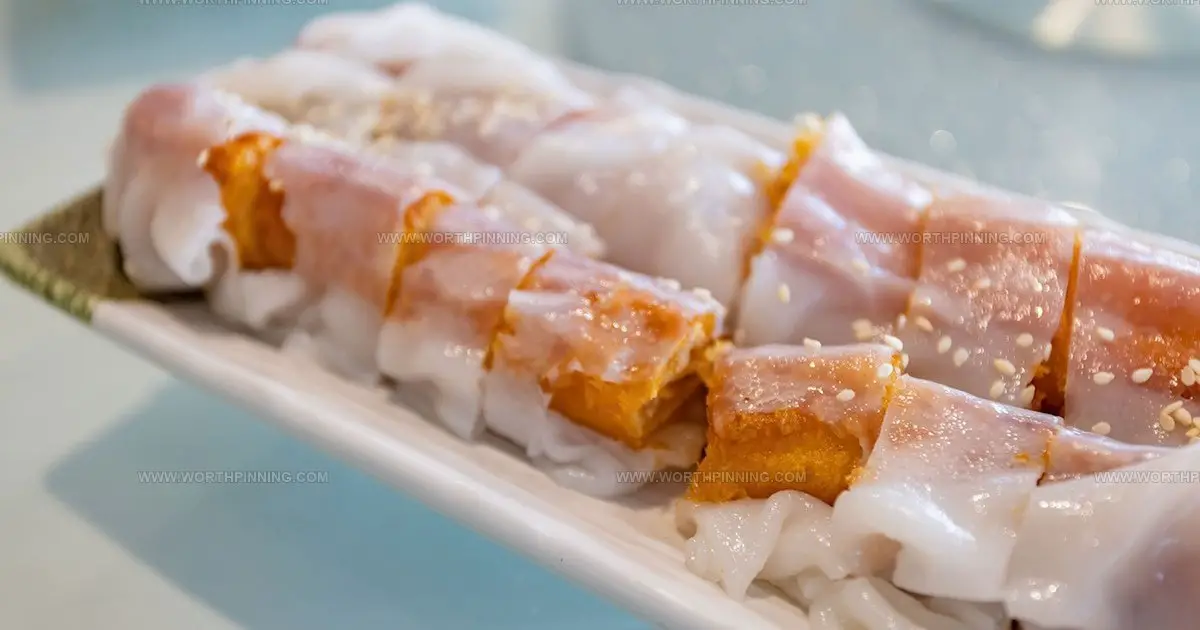
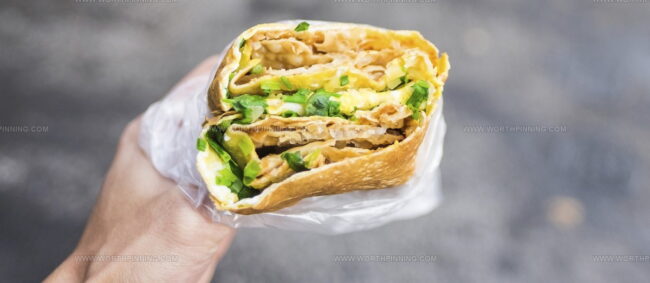
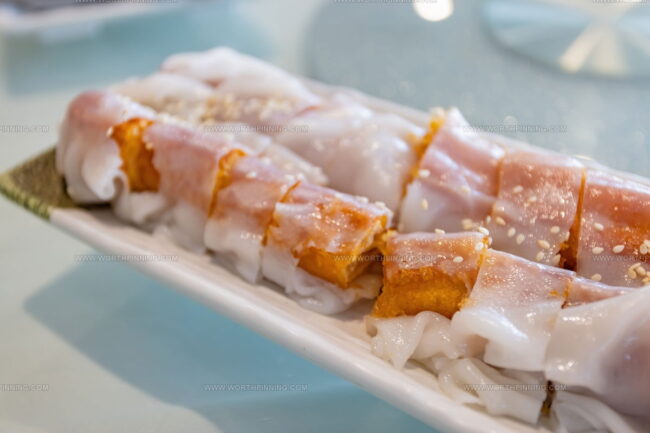
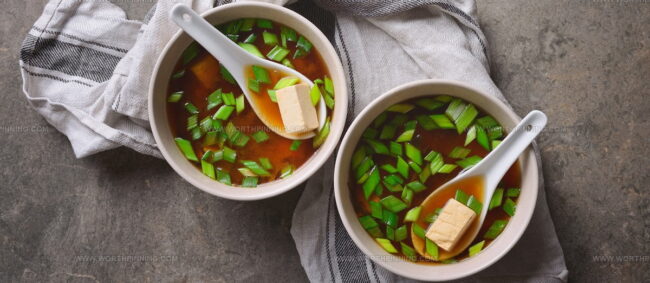
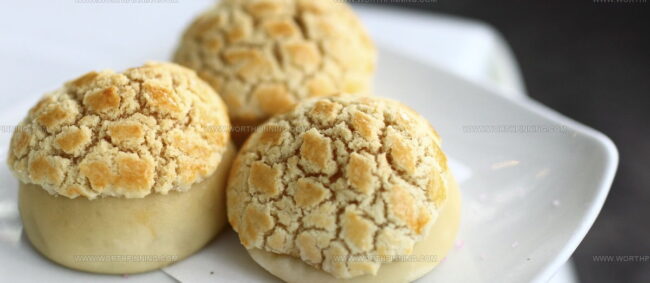

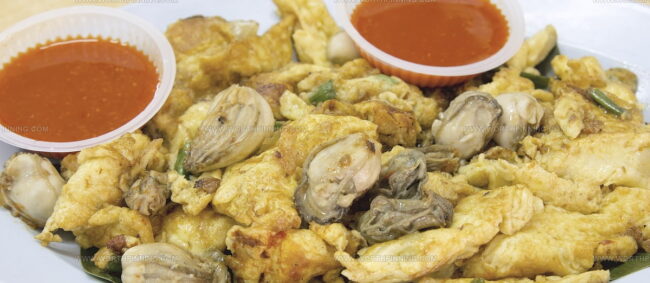
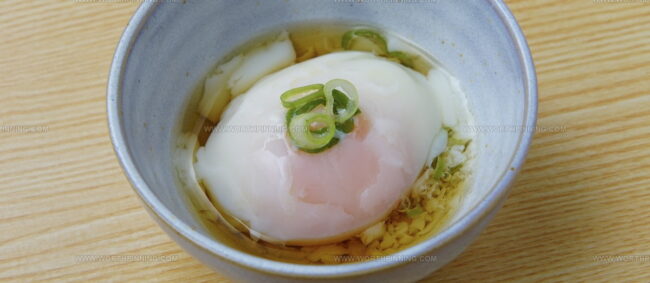
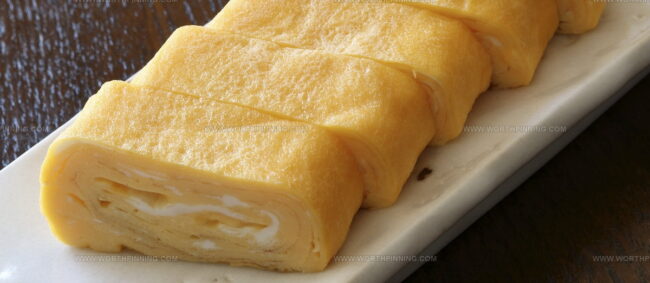
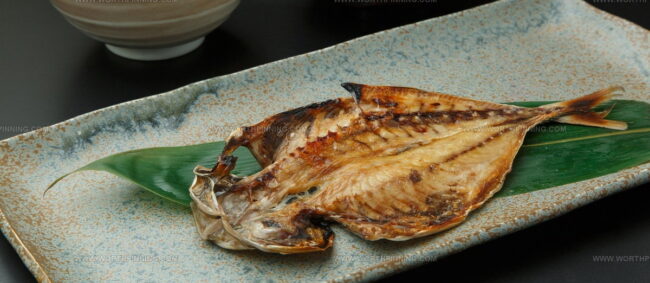
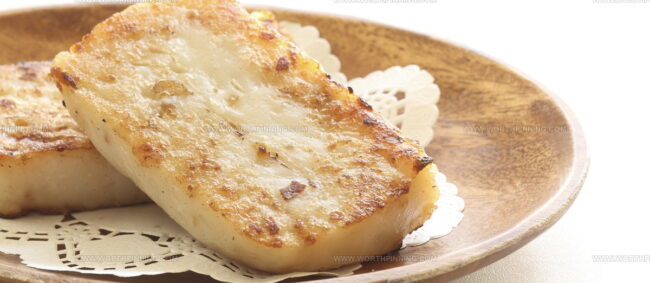
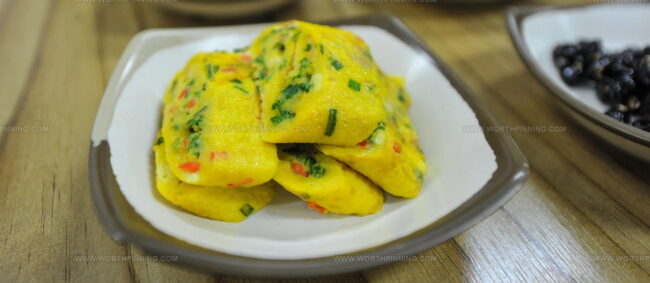
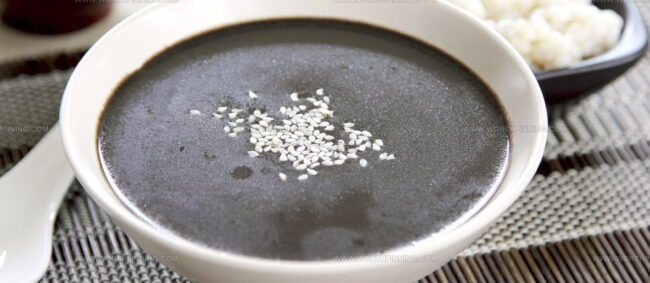
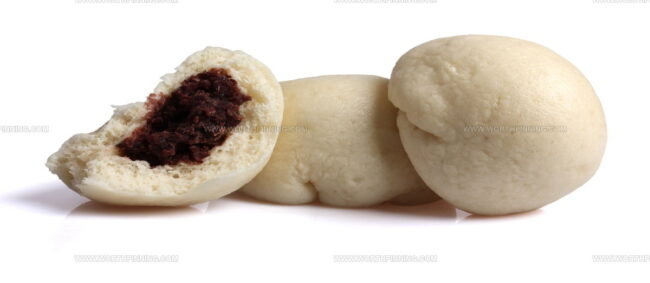
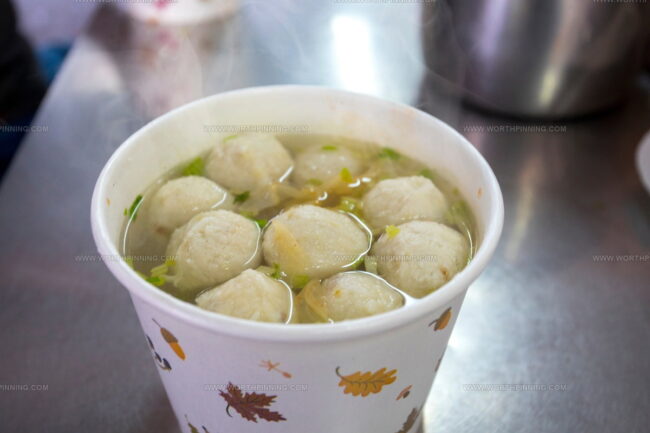
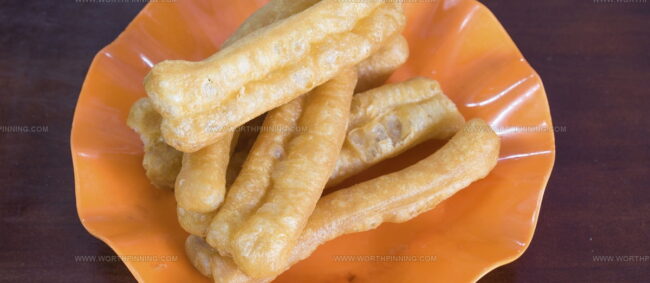
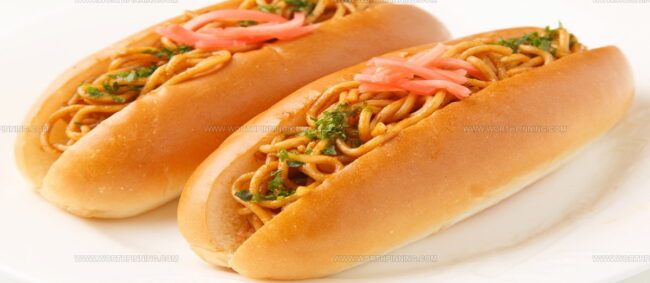
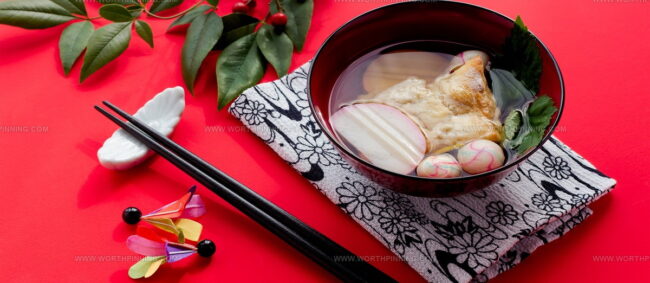

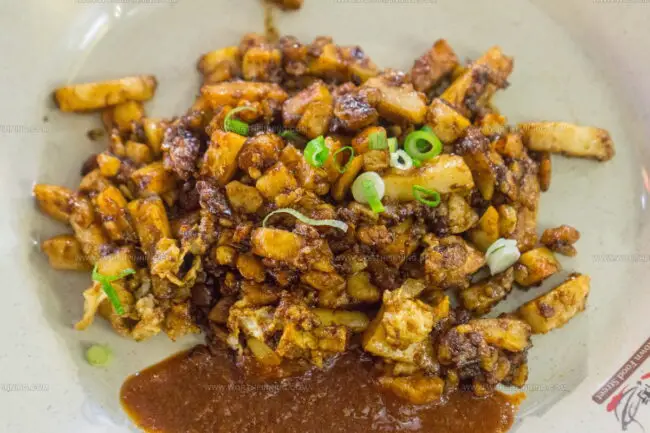

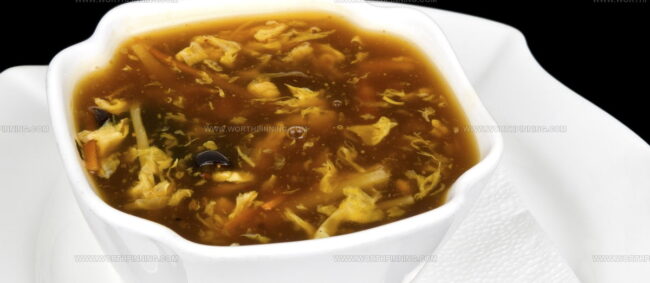

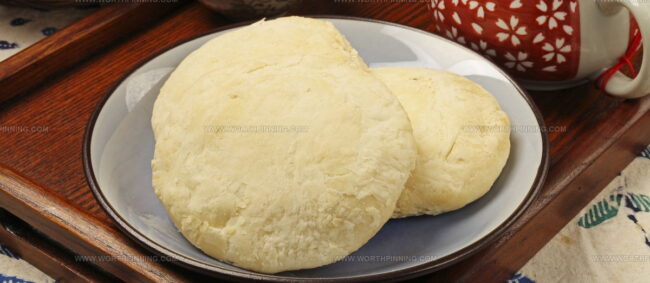

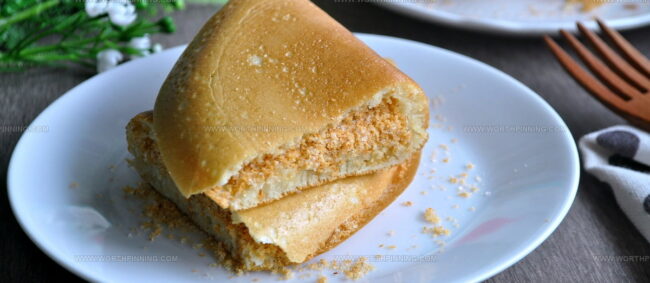
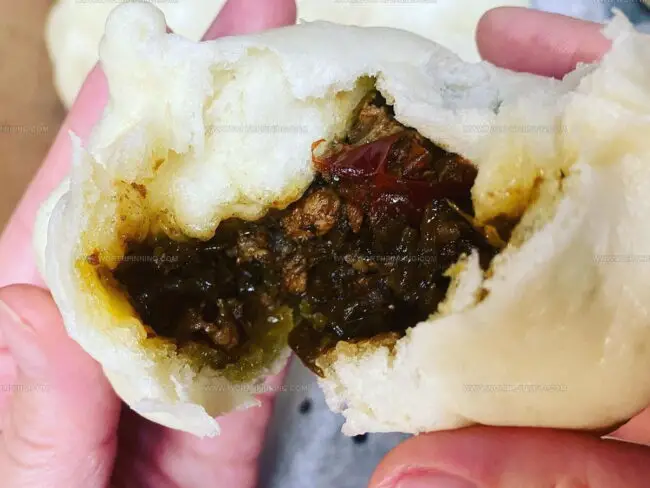
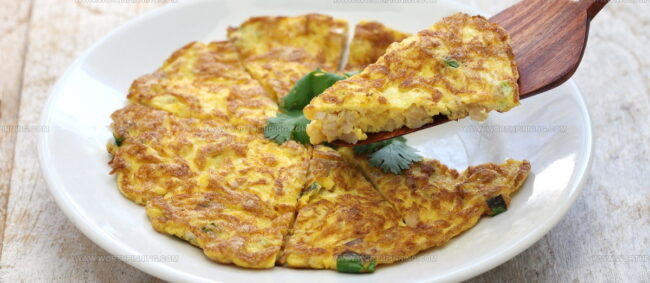
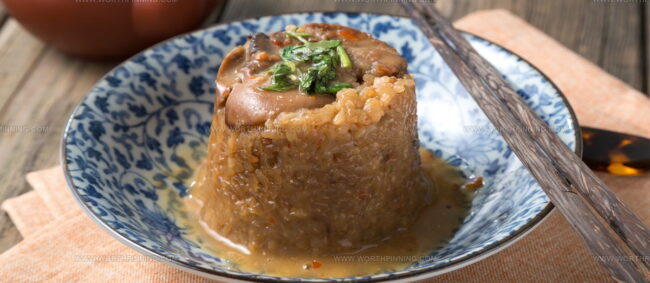
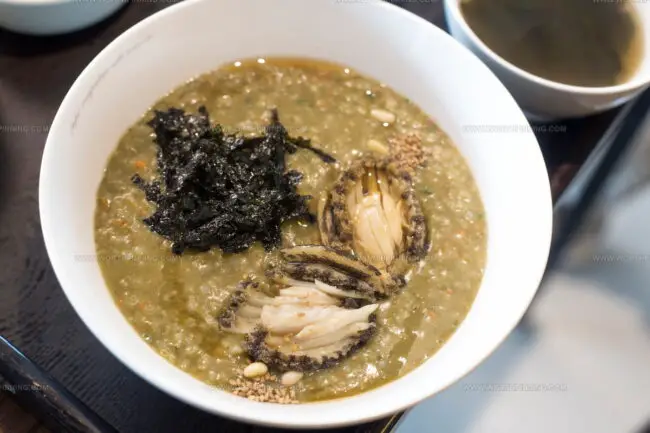
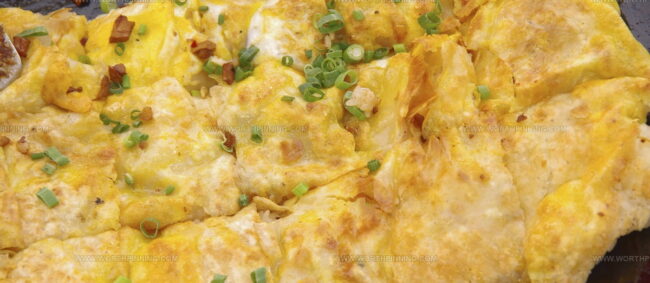
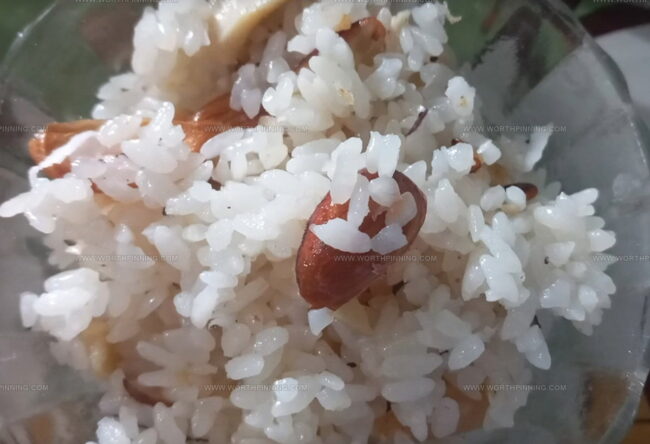
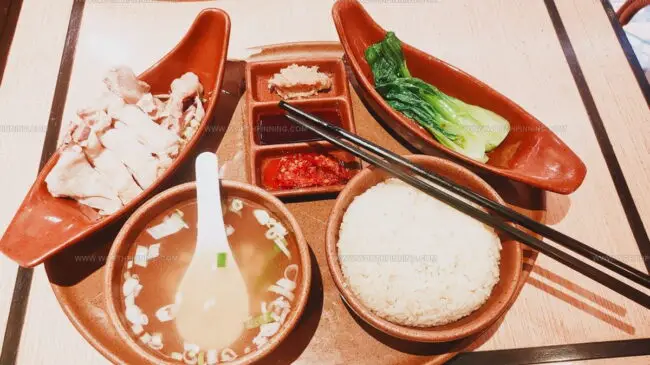
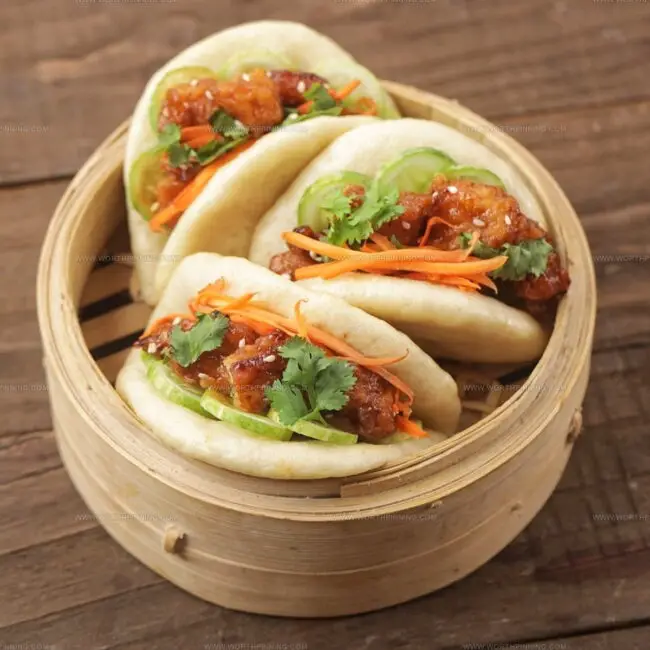
Ethan Miller
Founder & Lead Content Writer
Expertise
Education
Portland Community College
Culinary Institute of the Pacific
Ethan’s culinary journey began in his grandmother’s kitchen, where he first learned to play with flavors and ingredients. With formal training in culinary arts and a deep love for international cuisines, Ethan’s goal is to share the joy of cooking with others.
He believes food is all about creativity and bringing people together, one meal at a time. When he’s not experimenting with new dishes, he enjoys hiking in the Oregon wilderness and discovering fresh, local ingredients.